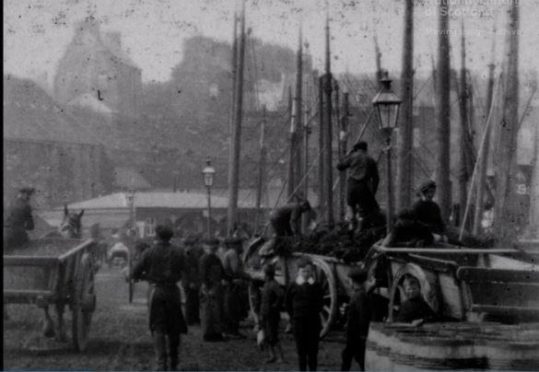Unique footage of life in Wick 120 years ago has been painstakingly restored to offer locals a fascinating glimpse into the past.
The oldest known moving images of the Caithness town, they centre mainly around the harbour – capturing herring drifters sailing in, fishermen working with their nets, and all the pomp of a civic parade.
The rare footage was captured in five Kinora Reels, not conventional film, but a collection of tiny card images of individual frames attached to a circular core.
Developed by the Lumière brothers in 1895, the Kinora was designed for people to enjoy short films at home. The reels acted like a flip-book, and were viewed in a Kinora viewer rotated with a handle.
The reels were donated by a Mr and Mrs Sutherland to the Wick Society from family archives more than 30 years ago and come from a family well-known in the north for pioneering the use of photography to capture snippets of daily life.
Ian Leith, chairman of the Wick Society, said: “They had been the property of Mrs Sutherland’s grandfather, Henry Williamson, cousin of William Johnston of the famous Johnston photographic collection family.
“Henry Williamson and the Pulteneytown Good Templars were instrumental in encouraging the first cinema in the town, with Henry acting as projectionist.
“The reels are a most important part of the town’s history and heritage and the Wick Society is indebted to the National Library of Scotland for making their time and expertise available in finally making these scenes from our past available again.”
Restoring the footage was a challenge and labour of love, said Alison Stevenson, head of the library’s moving image archive.
She said: “Kinora reels are tricky to work with.
“Given their age, they are in a very fragile condition.
“Our specialists digitised these reels card by card by to reassemble and stabilise the films frame by frame.
“The paper cards were bent and warped at different rates, so the digital image captured from each one had to be treated individually during restoration.
“It has been a labour of love.”
Mr Leith said intriguing details have emerged from scrutinising the footage.
He added: “The footage comes from between 1897 and 1911, possibly taken by a local photographer, John G Humphrey.
“We’ve been able to identify two of the drifters seen coming into the harbour, the Annie Smith, skippered by a Mr Gillies, and from Leurbost, Lewis, and the Mizpah, registered in Inverness and Lossiemouth, skippered by John Campbell.
“You can also see the paddleboat Marsden, which used to tow the drifters out when there wasn’t enough wind to catch their sails.”
The procession to St Fergus Church captured in the film dates to 1897, and could have been to celebrate Queen Victoria’s Golden Jubilee, Wick Society researchers think.
Mr Leith said: “We’ve been able to identify the provost and some of the councillors.
“Intriguingly there’s a billboard in the back advertising ‘Fit You’ corsets, although we haven’t found out if there were local stockists.
“Legend has it there are more Kinora reels out there, and we’d love to see them.”
